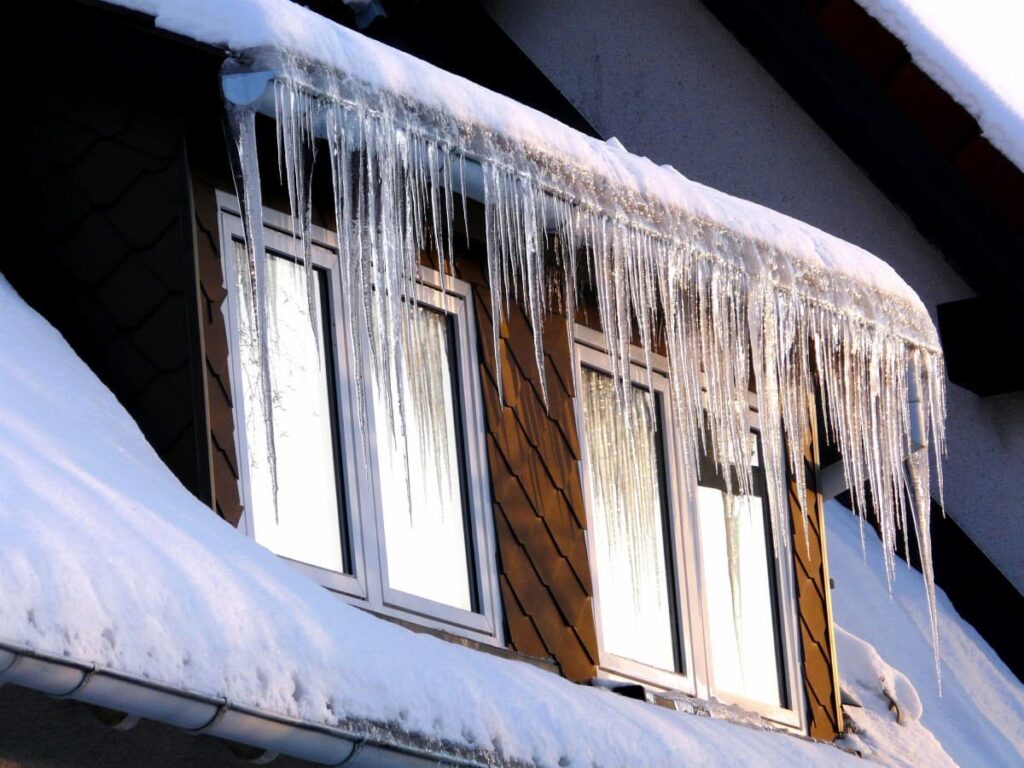Hot Roof vs Cold Roof: Attic Efficiency Simplified
Do you want to save money on your energy bills and make your attic more efficient? The answer may lie in the type of roof you choose. On average, homeowners can save up to 20% annually on their energy bills by choosing between a hot roof vs cold roof. Before choosing your roof, however, it’s important to learn about the different options and gain a basic understanding of the anatomy of a roof. Read on to learn more about the differences between these two types of roofs and which one is right for your home.
What Is a Cold Roof?
A cold roof is a roofing system that uses insulation and ventilation to help prevent ice dams and regulate indoor temperature. It’s typically used in colder climates, where the formation of ice dams on the roof can cause significant structural damage.

The insulation helps keep the roof at a consistent temperature and slow down melting snow, while ventilation keeps humidity levels low so mould won’t grow. Cold roofs offer several benefits, like preventing leaks from ice dams and reducing cooling costs in warmer months.
They also ensure heat doesn’t transfer too easily from the roof to your living areas when it’s hot outside. Cold roofs are an efficient way to keep things comfortable inside your home no matter what the weather brings.
What Is a Hot Roof?
You may be wondering what a hot roof is and how it differs from a cold roof. A hot roof is an attic insulation technique that places the insulation directly on top of the underlying structural roof framework and just beneath the roof decking. This creates uniform temperatures throughout the living spaces but has some drawbacks.

Hot roofs lack built-in ventilation, which can lead to moisture accumulation and mould proliferation. However, several benefits exist, such as simplified installation, minimized heat loss, and an elevated R-value with closed-cell spray foam insulation compared to fibreglass insulation.
If you’re buying a home, it’s more likely to have a cold roof; so for some homebuyers, the ability to choose the roof of their choice is one of the main advantages of building a new construction home. All in all, hot roofs can provide energy efficiency if properly installed and maintained.
Hot Roof vs. Cold Roof: Cost Comparison
With all the variables and factors going into your roofing decision, you may wind up choosing based on the roof replacement cost. Comparing a hot roof to a cold one, you’ll find that the insulation material cost can vary significantly.
Hot roofs require spray foam insulation, which is much more expensive than the fibreglass insulation used with cold roofs.
However, hot roofs have many advantages over cold roofs regarding attic efficiency, and if you’re choosing a roof for your new construction home, the cost difference between a hot and cold roof is much smaller.
Which Roof Is More Energy-Efficient?
When it comes to energy efficiency, a hot roof offers superior performance compared to a cold roof. The insulation provided by the hot roof design ensures comprehensive coverage of the entire roofing structure, blocking conditioned air from escaping and conserving energy.
Using spray foam insulation, every nook and cranny is effectively sealed for maximum energy savings. Spray foam boasts a higher R-value than fibreglass insulation, making it an ideal choice for moderate climates where temperature fluctuations are not extreme.
The cost comparison between hot and cold roofs depends on several factors, such as geographical location and installation materials used. In some cases, while hot roofs may require a larger initial investment than cold roofs, their enhanced energy efficiency can offer long-term financial benefits in terms of reduced electricity costs.
Additionally, if temperatures remain above 20 degrees Fahrenheit during winter months in your area, ice dams are less likely to develop with a hot roof strategy.
Although both types of roofs have their advantages and disadvantages depending on geographic location, hot roofs tend to be more energy efficient; if you live in a cold region, however, that efficiency is diminished and you may have to deal with significant expenses stemming from damage caused by ice dams.
Hot or Cold: Which Roof Is Right for Your Home?
Depending on your climate, the right roof for your home could be either hot or cold. If you live in a colder region, a cold roof is best for winter ice dam prevention. Its reflective surface keeps snow from melting and refreezing quickly onto the roof. However, if your area doesn’t have frigid winters, a hot roof is an energy-efficient option that can save you money on utility bills.
Hot roofs are designed to absorb heat in colder temperatures and release it during the warmer months. This helps keep your house cool in summer and warm in winter – perfect for areas with mild weather! No matter what type of roof you choose, ensure it’s well-insulated to maximize efficiency. Proper insulation will also help reduce condensation buildup inside your attic, which can lead to mould growth and other moisture problems. So whether you go with a hot or cold roof, always put insulation first!
Hot or Cold Roof: The Choice Is Yours
You’ve weighed the pros and cons of hot and cold roofs, and it’s time to decide. You’ll need to take your regional climate and the construction of your home into account because while hot roofs tend to be more energy-efficient in a vacuum, they could wind up costing you far more money in a colder climate. Using this guide, homeowners can make informed decisions about their roofing construction and enjoy a comfortable home for decades to come!
